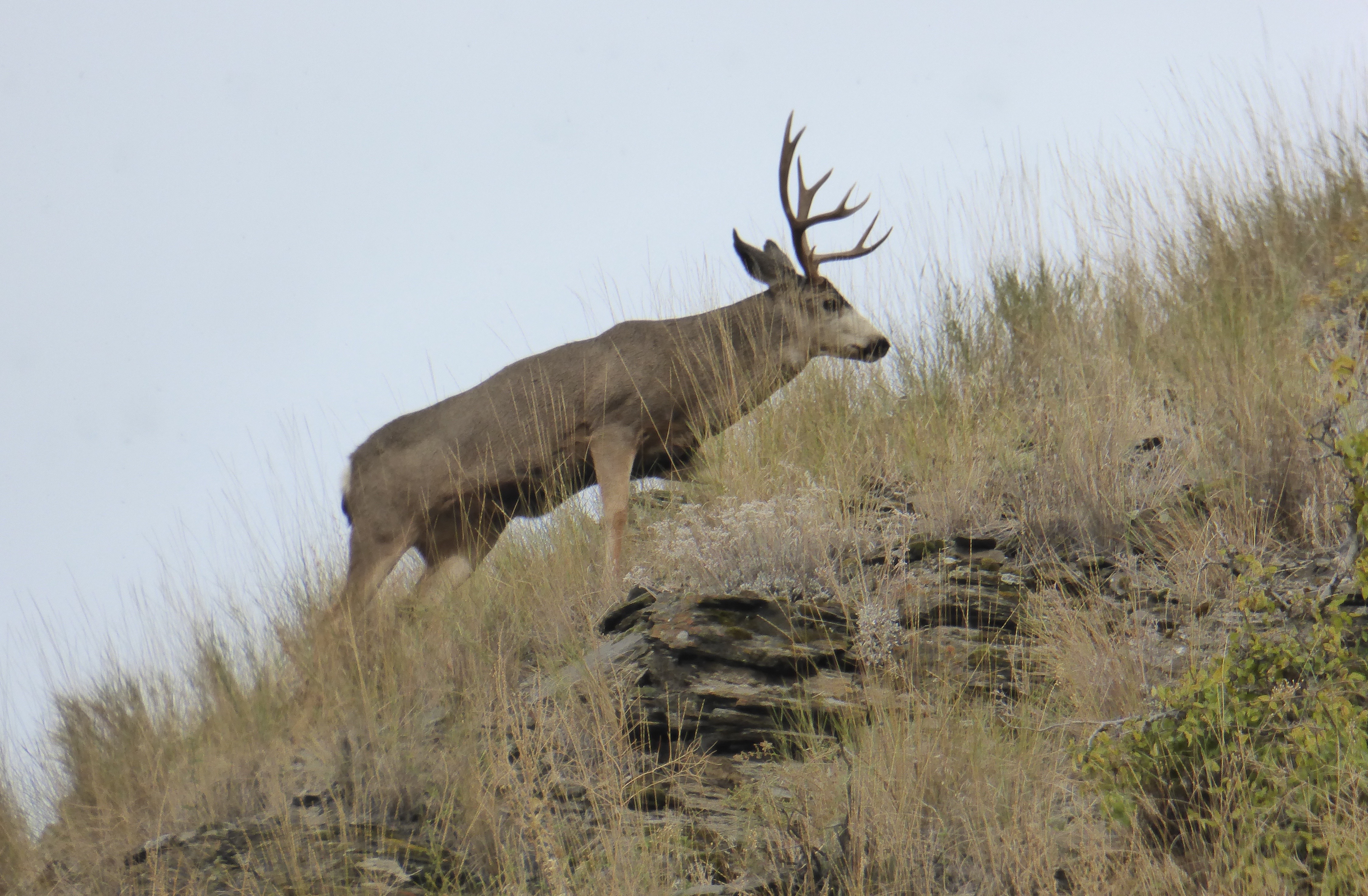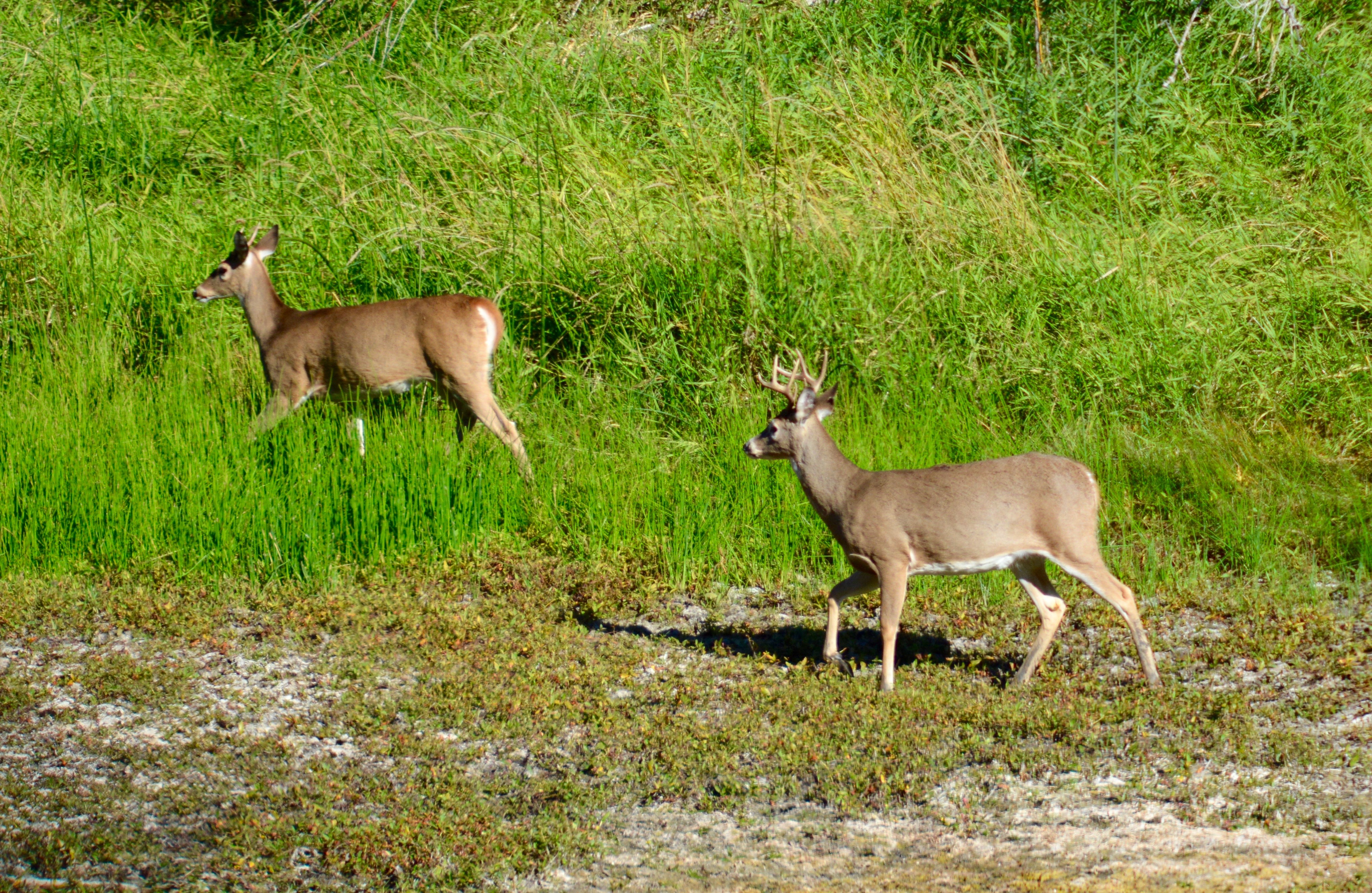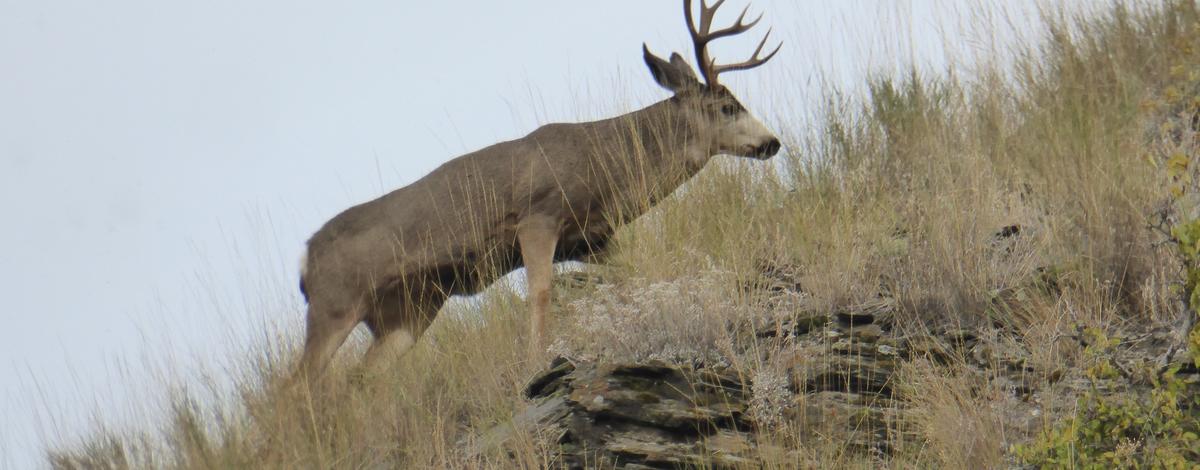Idaho big game hunters have been on a roll in recent years with a top-10, all-time deer harvest in 2016, an all-time record whitetail harvest in 2015, and a top-five, all-time elk harvest in 2015.
Overall hunting success rates over the last five years have averaged 40 percent for deer and 23 percent for elk. Word has gotten out that big game hunting in Idaho has improved because the nonresident deer tags sold out last year for the first time since 2008, and only 300 nonresident elk tags (out of 10,415 available) remained unsold.
The 2017 tags are selling faster, and at current pace, Fish and Game could sell all the nonresident deer and nonresident elk tags by the end of October to nonresidents, or to residents and nonresidents as second tags.
So what does all that mean for big game hunters taking to the field this fall? They will see similar numbers of elk and white-tailed deer, but fewer mule deer.

Mule deer
Last winter took its toll on mule deer, particularly young bucks, because most of the fawns born last year died during winter, and they would have been two-points this fall.
Most of southern and central Idaho had record, or above-average snowfall, coupled with prolonged winter weather. Deer and elk weathered repeated snowstorms and snow depths not normally found on their traditional winter range coupled with Arctic temperatures. That prompted Fish and Game officials to launch a massive feeding effort that included up to 13,000 deer and 12,000 elk.
Despite that, statewide average survival for mule deer fawns was 30 percent, which was the second-lowest since winter fawn monitoring started 19 years ago.
The big question in many hunters’ minds is how much that will affect their fall deer hunts. Deer hunters killed 66,925 deer in 2016 (mule deer and whitetails), down slightly from the previous year, but still a respectable 36 percent success rate statewide, including 34 percent in general hunts.

Like most things related to big game hunting, it’s hard to predict what will happen during the upcoming season because there are many variables, but past hunting seasons may provide some insight.
The 2011 deer harvest – which followed the lowest winter fawn survival since monitoring started in 1998 – was 2,555 fewer deer than the previous year, or a drop of 6 percent. Last winter actually tied with 2008-09 winter for second-lowest fawn survival at 30 percent, and in 2009, the deer harvest was 1,380 fewer than the previous year, a drop of 3 percent.
How does that happen?
There are a couple things to keep in mind. First, although mule deer fawn mortality was high in those years, whitetail herds were less affected by winter kill. Whitetails have typically comprised 30 to 40 percent of Idaho’s annual deer harvest during the last decade. That means sometimes white-tailed deer harvest compensates for fewer mule deer.
While last winter’s mule deer fawn survival was well below average, it was still not catastrophic to the overall mule deer population.
Adult mule deer doe survival was 90 percent, and although Fish and Game does not radio collar adult bucks and monitor them during winter, their survival likely tracked similar to does.
Yearling bucks (two-points) typically account for a significant share of the mule deer buck harvest, but over the last 19 years, annual average survival for fawns was 57 percent. While the 2016-17 winter fawn survival was about half the average, there’s still a large mule deer population remaining, including adult bucks and breeding-age does.

With a normal, upcoming winter, the herds could quickly rebound. To aid that, Fish and Game has reduced doe permits for most hunting units in southern and central Idaho to help more of them survive into breeding season.
Another thing to consider is prior to this year, mule deer populations were trending upward for several years, so while biologists expect a drop in the harvest, there’s a good chance it will fall within the range of the last five years.
Elk
Hunters shouldn’t see a big change in elk populations this year. Elk are hardier than deer and able to withstand the rigors of hard winters, and elk herds have increased in recent years and produced some outstanding hunting seasons.
Hunters killed 22,557 elk in 2016, which was down 1,670 animals from 2015, but still the second highest in 20 years. (For more perspective, 2015 was the fourth-highest, all-time harvest dating back to 1935.)
Elk hunters in 2016 had 21 percent success statewide, including 39 percent for controlled hunts and 17 percent for general hunts, but general hunts accounted for 62 percent of the harvest.

“This is the good-old days of elk hunting,” said Craig White, F&G’s Magic Valley regional supervisor. “There was only one period when Idaho hunters were harvesting as many elk as they are now.”
However, elk herds didn’t survive winter completely unscathed. There was higher calf mortality due to the harsh winter, which means some zones will have a “blip in the recruitment of young bulls,” White said, adding that it will likely be short-term.
Adult winter survival, particularly breeding-age cows, was “bulletproof,” he said, so any decline in herds will likely be replaced next year, barring another extreme winter.
While Idaho is reliving some of its glory years for elk hunting, the location of the animals has changed. During record harvests in the 1990s, Central Idaho’s backcountry and wilderness areas were major contributors. They are less so these days, but other areas have picked up the slack.
“We grow more elk in what I like to call the front country,” White said.

Harvest results support this. The Panhandle is currently the top elk zone in the state, and the top 10 zones include the Weiser River, McCall, Tex Creek, Palouse, Boise River and Pioneer, all of which have major highways running through them.
Those zones provide accessible opportunities for many hunters, but also have unique challenges because there’s often a mix of public and private lands where the elk roam.
Elk herds are doing so well in some zones, such as the Weiser and Pioneer zones, those herds are over objectives and Fish and Game has increased cow hunting opportunities to thin the herds.

But elk hunters in some areas will have to navigate a mix of public and private lands, such as large sections of commercial timberlands in Central Idaho that used to be open to the public, but are now closed.
For new elk hunters, or experienced hunters looking for a new place to hunt, White recommends taking a longer view than this season. Elk populations are likely to remain healthy in the foreseeable future, so now’s a good time to learn a zone where there are abundant herds.
“Be patient,” White advises. “Make it a multi-year commitment, and get to know the area.”
Idaho offers a variety of over-the-counter tags for elk hunters. Out of 28 elk hunting zones, only two are limited to only controlled hunts. Hunters should research each zone and look beyond the general, any-weapon seasons to find additional opportunity. Many archery and muzzleloader hunts provide antlerless, or either-sex hunting, and also early and late hunts.
White-tailed deer
Idaho’s whitetail deer are about as reliable as you can ask for in a big-game animal. Over the last five years, Idaho’s mule deer harvest has swung by nearly 20,000 animals, but during that same period, whitetail harvest varied by only about 10,000 animals, which included an all-time record of 30,578 whitetails harvested in 2015.

Whitetail harvest dropped about 2,700 animals in 2016, but it was still in the top-10, all-time, and hunters can expect to similar numbers, or more, of whitetails this year.
“We feel we’re in pretty good shape, and it’s going to be a normal year,” said Clay Hickey, wildlife manager for the Clearwater Region.
Winter in prime whitetail country in the Panhandle and north/central Idaho was closer to average than southern Idaho, although Hickey pointed out there was more snow than usual at lower elevations. Fish and Game doesn’t monitor whitetails the same as it does mule deer, but Hickey said there’s no indication of an above-average winter kill.
It’s also been two years since Fish and Game has detected outbreaks of the lethal hemorrhagic disease that hit some local herds hard in recent years. Hickey noted many of those herds have “rebounded as you would expect,” and Fish and Game is starting to get complaints from landowners about too many deer in areas where herds were thinned by the disease.
Whitetail hunters have lengthy seasons and lots of either-sex hunting opportunities, and hunters will see a good mix of age classes, and plenty of mature bucks. Hickey said Fish and Game’s white-tailed deer plan calls for 15 percent of the harvest to be bucks with five points or more (on one side), but it’s currently higher.
“We’re averaging over 20 percent of the bucks in the harvest are five-points or more in almost all our whitetail units, and lots of units are over 25 percent,” he said.

While the areas north of the Salmon River have the highest densities of white-tailed deer, the animals are widely distributed throughout the state and provide hunting opportunities in most places, but typically at lower densities.
For a detailed look at big-game harvest see our harvest statistics page.
To learn more about Idaho's hunting opportunities, see Fish and Game's Hunting Planner.
Buy your 2017 hunting license and be eligible for Price Lock.

